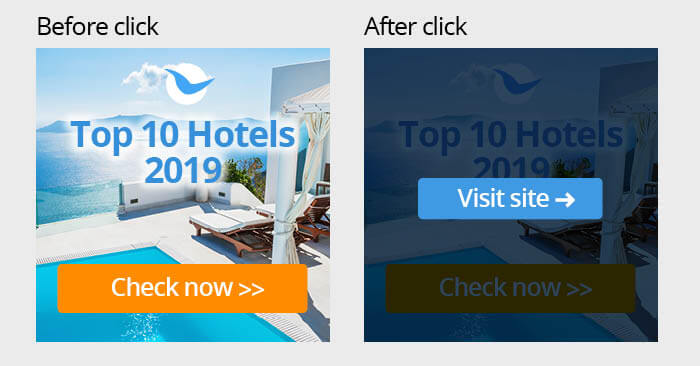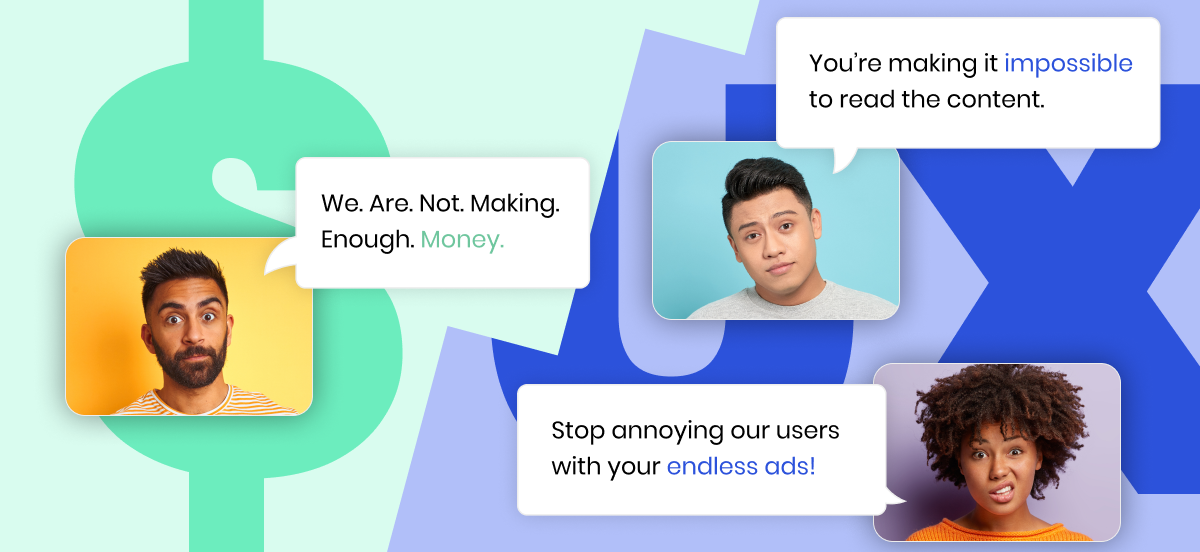Here’s How Automated Optimization Prevents Google’s Confirmed Click Penalty
By Asaf Shamly | January 27, 2021

A growing number of publishers using Google AdSense and Ad Exchange have been penalized over the last six months for running afoul of Google’s Confirmed Clicks initiative, creating a loss in revenue and confusion over how to avoid these penalties, as Digiday reports.
Google’s initiative is ultimately aimed to create a better user experience for people on the internet by trying “to clean up the open web,” as Digiday notes.
However, the effort is creating headaches for publishers who aren’t sure what they’ve been penalized for, and what they need to do to fix their website.
But publishers aren’t without solutions: Broadly speaking, the surest fix is going to be fixing your ad layout.
Let’s Talk the What, How and Why of Confirmed Clicks
The Confirmed Clicks initiative was launched in 2012 and aimed at alleviating “the ‘fat finger’ issue, where you accidentally tap on a banner ad on your phone,” as TechCrunch reported at the time.
The problem is “annoying for the consumer, since they’re directed to a site that they had no intention of visiting, and it’s bad for the advertiser too, since they’re paying for a click that doesn’t have much value,” TechCrunch explained.
The company is essentially aiming to limit publishers from making money off of people accidentally clicking on ads.
And so, if Google finds that an ad unit has higher-than-average invalid clicks, it will overlay a ‘Visit Site’ message over the impression serving that particular ad unit.

According to Google, these invalid clicks can be either fraudulent or accidental.
In other words, even if a publisher isn’t doing anything nefarious to boost revenue, he or she can still be penalized.
Google places the ‘Visit Site’ notification on a publisher’s site without any notification, which means the way publishers most often find out if they’ve been penalized is by seeing a steep drop in ad revenue even when impressions have stayed the same.
While some publishers believe the policy is too cut and dry and lacks any sort of nuance, Google has said that the goal of the initiative is ultimately meant to benefit both the user and the publisher.
In other words, while it seeks to improve the user experience, it’s also meant to help publishers avoid seeing a drop in the value of their ad units or even losing advertisers.
Why You Should Care About Confirmed Clicks
Though publishers will probably not disagree with Google’s intentions, it’s questionable how many publishers agree that the Confirmed Clicks initiative has benefited them thus far.
The problem is that the ‘Visit Site’ overlay likely deters users from visiting a site.
After all, one of the keys to good UX is to not force users into taking an extra step they normally wouldn’t take, which can result in a drop in click-through rates. This decrease in click-through rates then causes publisher ad rates to drop and, ultimately, a decline in ad revenue.
In fact, Digiday’s Southern reports that the Confirmed Clicks initiative has led to “a drop in programmatic ad revenue of between 40% and 60%” for publishers that have been penalized by Google.
Though the company’s spokesperson says that the ‘Visit Site’ message is removed as soon as “we see an improvement in click quality,” one industry insider tells Southern that some publishers can wait 8 to 10 weeks before this happens.
Meanwhile, Alon Germansky, head of business intelligence at PubPlus, notes that Google’s penalties come in three levels.
The least severe is a penalty that affects a single ad unit on a specific page.
Next is a site penalty that affects all ad units on a publisher’s mobile site.
And finally the harshest penalty is on the AdSense and Ad Exchange level, which means that all sites and all ad units connected to these accounts are penalized.
“We suspect that penalties are initially given on the ad unit level and then spread to the 2nd and 3rd level, and the penalties are similarly removed one level at a time,” Germansky explains.
Preventing Invalid Clicks With Better Ad Layouts
We’re going to assume that most publishers aren’t trying to fraudulently boost their revenue through invalid clicks, which means that the problem likely has to do with their ad layout.
Here are steps publishers can take to address problems with their layout:
- Publishers should first review Google’s Ad implementation policies, and then conduct a review of their ad layout “to ensure ad placements are optimized for the users experience and that accidental click potential is low,” as Germansky points out.
- Furthermore, Germansky advises publishers to check their ad load on multiple devices; remember that one of Google’s penalties is a site penalty that affects all sites (i.e. mobile and desktop) that are connected to the AdSense and Ad Exchange account. Besides demising the UX, a longer ad load time could also mean that a page has too many ads on it, which could increase the risk of invalid traffic (IVT).
- Germansky points out that content can shift abruptly as “ad units are rendered, causing content to suddenly move around the page, increasing your site’s accidental click potential.” Therefore, publishers need to focus on the mapping of their ad layout to prevent accidental clicks, which includes ensuring that there’s enough space between ads and there isn’t any navigational overlapping on either mobile or desktop devices. But because content can shift abruptly, it can be extremely difficult to optimize your ad layout manually.
What is the problem with these suggested steps?
As most publishers take a manual approach of layout optimization, which results in long and arduous processes, they are going to find out they’ve violated the policy too late.
Then, your ad revenue is already plummeting.
Our Two Cents – Automated Ad Inventory Optimization
As a publisher, you can’t afford yourself to get penalized by Google.
And let’s be honest: Going in the direction of manual optimization of ad layouts is neither efficient, nor scalable.
Why?
One ad layout doesn’t fit all.
Content is consumed in real-time and pages have different structures, varying levels of user engagement, and are shown on multiple types of devices.
It’s nearly impossible to manually adjust the ad layout when there are so many variables.
You need to take the guesswork out of your ad layout optimization by adopting an AI-driven platform, such as Browsi Revenue OS provides.
By using AI to leverage multiple data points in real time, you can automatically create ad layouts tailored to a specific user, page and device, at the right time.
This means that you can deliver great ad experiences and prevent invalid clicks, while increasing the bottom line, by producing the highest combination of viewability, scale and UX.
It also means that AI defines if, when, and how (lazy or eager load) each ad request will be rendered, based on user behavior and engagement, thereby preventing the content to shift abruptly and result in invalid clicks.
By Now, You Get the Idea
Google’s Confirmed Clicks initiative is, at least on paper, a positive step for publishers, users and advertisers.
But the financial and operational headaches it can cause unwitting publishers can’t be ignored.
If you’re committed to increasing revenue, and want to avoid fixing problems with your layout after it’s already too late, then Browsi is ready to help.
Latest Articles
-

Do NOT make me choose between a great UX and boosting my revenue!!
The ongoing clashes between revenue, product, and editorial teams are painful to say the least. It doesn’t have to be this way.
View Now -

Your Brand New Viewability Dashboard!
Understand your inventory breakdown with the new Viewability Dashboard.
View Now -

Maximize Your UX & Revenue Data With Personalized Reports
Ready to uncover insights and step up your ad layout strategy?
View Now
